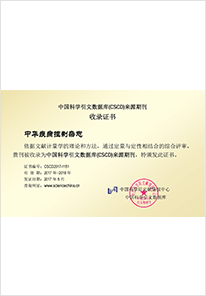2021 Vol. 25, No. 6
Display Method:
2021, 25(6): 625-631.
doi: 10.16462/j.cnki.zhjbkz.2021.06.002
Abstract:
2021, 25(6): 637-643.
doi: 10.16462/j.cnki.zhjbkz.2021.06.004
Abstract:
2021, 25(6): 644-649, 678.
doi: 10.16462/j.cnki.zhjbkz.2021.06.005
Abstract:
2021, 25(6): 656-662.
doi: 10.16462/j.cnki.zhjbkz.2021.06.007
Abstract:
2021, 25(6): 663-667.
doi: 10.16462/j.cnki.zhjbkz.2021.06.008
Abstract:
2021, 25(6): 668-672, 697.
doi: 10.16462/j.cnki.zhjbkz.2021.06.009
Abstract:
2021, 25(6): 673-678.
doi: 10.16462/j.cnki.zhjbkz.2021.06.010
Abstract:
2021, 25(6): 679-685,715.
doi: 10.16462/j.cnki.zhjbkz.2021.06.011
Abstract:
2021, 25(6): 686-691.
doi: 10.16462/j.cnki.zhjbkz.2021.06.012
Abstract:
2021, 25(6): 698-702.
doi: 10.16462/j.cnki.zhjbkz.2021.06.014
Abstract:
2021, 25(6): 709-715.
doi: 10.16462/j.cnki.zhjbkz.2021.06.016
Abstract:
2021, 25(6): 716-721.
doi: 10.16462/j.cnki.zhjbkz.2021.06.017
Abstract:
2021, 25(6): 722-729.
doi: 10.16462/j.cnki.zhjbkz.2021.06.018
Abstract:
2021, 25(6): 730-733.
doi: 10.16462/j.cnki.zhjbkz.2021.06.019
Abstract:
2021, 25(6): 734-738.
doi: 10.16462/j.cnki.zhjbkz.2021.06.020
Abstract:


 Email alert
Email alert RSS
RSS Abstract
Abstract HTML
HTML PDF
PDF





